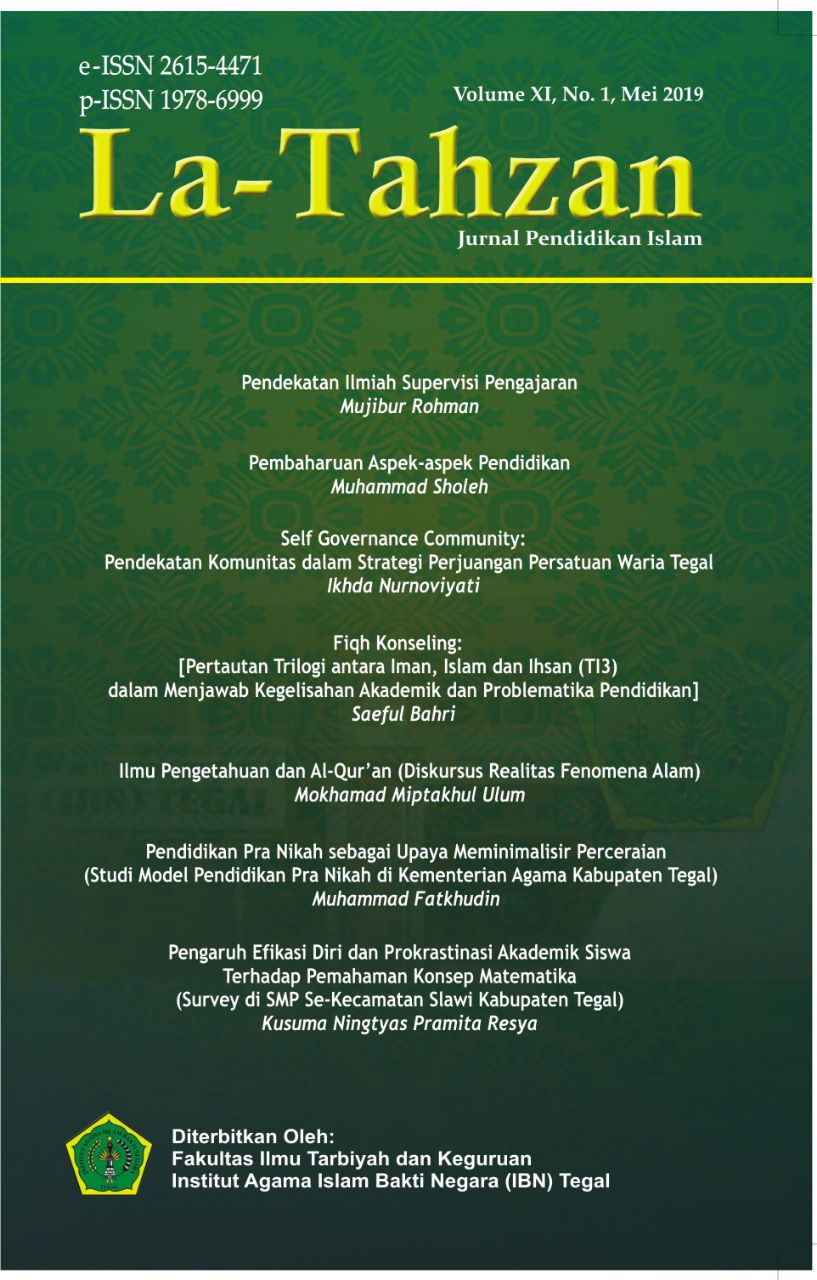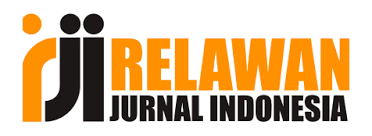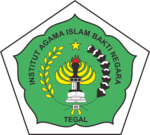Pendidikan Pra Nikah Sebagai Upaya Meminimalisir Perceraian (Studi Model Kursus Pra Nikah di Kementerian Agama Kabupaten Tegal)
DOI:
https://doi.org/10.62490/latahzan.v11i1.10Keywords:
Pendidikan, Perceraian, Kursus Pra Nikah, Kementerian Agama,Abstract
This paper presents the results of research on Pre-Marriage Education in the Pre-Marriage Course model in Tegal Regency, the implementation of the Pre-Marriage Course in broad outline refers to Perdirjen No. DJ.II / 491/2009. The implementation of Pre-Marriage Courses is generally carried out according to the capabilities of the KUA and the Ministry of Religion. The model of implementation, both in groups and with individuals is carried out in accordance with the event of marriage and the willingness of the bride and groom. The speakers came from the KUA more often, the material presented was related to government regulations related to marriage, marriage law, household matters, and remembrance of the reconciliation process which will be carried out by Catin during the wedding procession, and the duration of the group is approximately 3 hours and 1 hour individual. Broadly speaking, the implementation of the Pre-Marriage Course has embraced the principle of public service (Law No. 25/2009), except that in the professional principle it cannot be fulfilled because it collides with the funding owned by the Ministry of Religion.
Tulisan ini menyajikan hasil penelitian tentang Pendidikan Pra Nikah model Kursus Pra Nikah di Kabupaten Tegal, penyelenggaraan Kursus Pra Nikah secara garis besar mengacu pada Perdirjen No. DJ.II/491/2009. Penyelenggaraan Kursus Pra Nikah secara umum dilakukan sesuai kemampuan dari KUA dan Kementerian Agama. Model penyelenggaraan, baik secara kelompok maupun dengan perorangan dilakukan sesuai dengan peristiwa nikah dan kesediaan calon pengantin. Narasumber lebih sering berasal dari pihak KUA, materi yang disampaikan menyangkut masalah peraturan pemerintah terkait perkawinan, hukum pernikahan, perihal berumah tangga, dan pengingatan kembali proses ijab qabul yang nanti akan dilakukan catin saat melakukan prosesi pernikahan, dan durasi penyelenggaraan secara kelompok kurang lebih 3 jam dan perorangan 1 jam. Secara garis besar, penyelenggaraan Kursus Pra Nikah sudah menganut asas pelayanan publik (UU No. 25/2009), hanya saja pada asas profesional belum bisa dipenuhi karena berbenturan dengan pendanaan yang dimiliki Kementerian Agama.
References
Ghazaly, Abd Rahman, Fikih munakahat, Jakarta: Kencana Prenada Media Grup, 2003
Hasil Putusan MUNAS BP4 ke XIV/2009, Jakarta, 1-3 Juni 2009
http://www.nu.or.id/ Antisipasi perceraian, Calon Pengantin harus Ikuti Kursus Pra Nikah
Peraturan Direktur Jenderal Bimbingan Masyarakat Islam Nomor DJ.II/542 Tahun 2013 tentang Pedoman Penyelenggaraan Kursus Pra Nikah, Jakarta, 2013
Tim Redaksi Kamus Pusat bahasa, Kamus Besar Bahasa Indonesia, Jakarta: Balai Pustaka, 2007
Dirjen Bimas Islam. 2011. Pedoman Penyelenggaraan Kursus Pra Nikah. Jakarta: Dirjen Bimas Islam Direktorat Urusan Agama Islam dan Pembinaan Syariah.
Dirjen Bimas Islam. 2013. Pedoman Penyelenggaraan Kursus Pra Nikah. Jakarta: Dirjen Bimas Islam, Direktorat Urusan Agama Islam dan Pembinaan Syariah.
Peraturan Direktur Jenderal Bimas Islam Nomor DJ. II/372 Tahun 2011 tentang Pedoman Penyelenggaraan Kursus Pra Nikah.
Peraturan Direktur Jenderal Bimas Islam Nomor DJ. II/491 Tahun 2009 tentang Kursus Calon Pengantin.
Peraturan Direktur Jenderal Bimas Islam Nomor DJ. II/542 Tahun 2013 tentang Pedoman Penyelenggaraan Kursus Pra Nikah.
Peraturan Menteri Agama Republik Indonesia Nomor 39 tahun 2012, tentang Organisasi dan Tata Kerja Kantor Urusan Agama.
Peraturan Pemerintah Nomor 21 Tahun 1994, tentang Penyelenggaraan Pemabngunan Keluarga Sejahtera.
Tim Bidang Kehidupan Keagamaan Balai Litbang Agama Jakarta. 2015. “Desain Operasional Penyelenggaraan Kursus Pra Nikah di Wilayah Indonesia Bagian Barat”.
Laporan Tahunan Pengadilan Agama Slawi
Downloads
Published
How to Cite
Issue
Section
License
Copyright (c) 2019 La-Tahzan: Jurnal Pendidikan Islam

This work is licensed under a Creative Commons Attribution-ShareAlike 4.0 International License.
The copyright of the received article shall be assigned to the journal as the publisher of the journal. The intended copyright includes the right to publish the article in various forms (including reprints). The journal maintains the publishing rights to the published articles.
In line with the license, authors and any users (readers and other researchers) are allowed to share and adapt the material. In addition, the material must be given appropriate credit, provided with a link to the license, and indicated if changes were made. If authors remix, transform, or build upon the material, authors must distribute their contributions under the same license as the original.
















